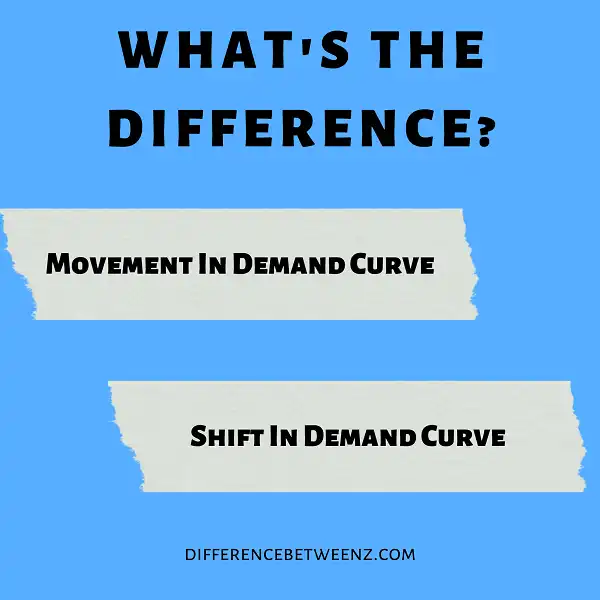Movement and shift in demand curve are two terms that are often used interchangeably. However, these two terms have different meanings. This blog post will define these two terms and explain the difference between them. Additionally, examples will be given to illustrate the difference between movement and shift in the demand curve. After reading this blog post, you will be able to distinguish between movement and shift in the demand curve correctly.
What is Movement In Demand Curve?
The Movement In Demand Curve refers to a shift in the demand curve. This can be either to the right or to the left. A rightward shift means that people are willing and able to buy more at any given price, while a leftward shift indicates that they are willing and able to buy less. The Movement In Demand Curve is usually caused by a change in one of the four main demand factors: price, income, tastes, or expectations. For example, if prices rise people may start to buy less of a good, causing a leftward shift in the demand curve. Alternatively, if incomes rise people may start buying more luxury items and hence there is a rightward shift in the demand curve for these goods.
What is Shift In Demand Curve?
A Shift In Demand Curve occurs when the entire demand curve moves either left or right. A movement to the left indicates a decrease in demand while a movement to the right represents an increase in demand. The main reason for a shift is a change in one of the five determinants of demand: income, prices of related goods, taste and preferences, population, or expectations. For example, an increase in income will lead to an increase (right shift) in the demand for most normal goods. A decrease in the price of a good will lead to an increase (right shift) in its demand. A change in taste and preference will also lead to a Shift In Demand Curve. If people begin to prefer steak over chicken, the demand curve for steak will Shift to the right.
Difference between Movement and Shift In Demand Curve
Movement along the demand curve happens when there is a change in the price of the good or service but everything else remains the same. This can be represented as a movement from one point to another on the demand curve. A shift in the demand curve happens when something other than the price changes, such as consumer incomes or preferences. This is represented as a whole shift of the demand curve. To sum it up, a movement along the demand curve is caused by a change in price while a shift of the demand curve is caused by anything else.
Conclusion
In order to take advantage of shifting demand, it’s important for businesses to understand the difference between movement and shift. Movement is when current customers purchase more of your product or service, while shift happens when new customers are brought in who wouldn’t have purchased from you otherwise. Both can result in increased profits, but businesses need to be aware of what changes they need to make in order to capitalize on each one. Applying the knowledge we’ve shared about movement and shift in this article should help you better understand how and why the demand for your product is changing so that you can adjust your business strategy accordingly.


